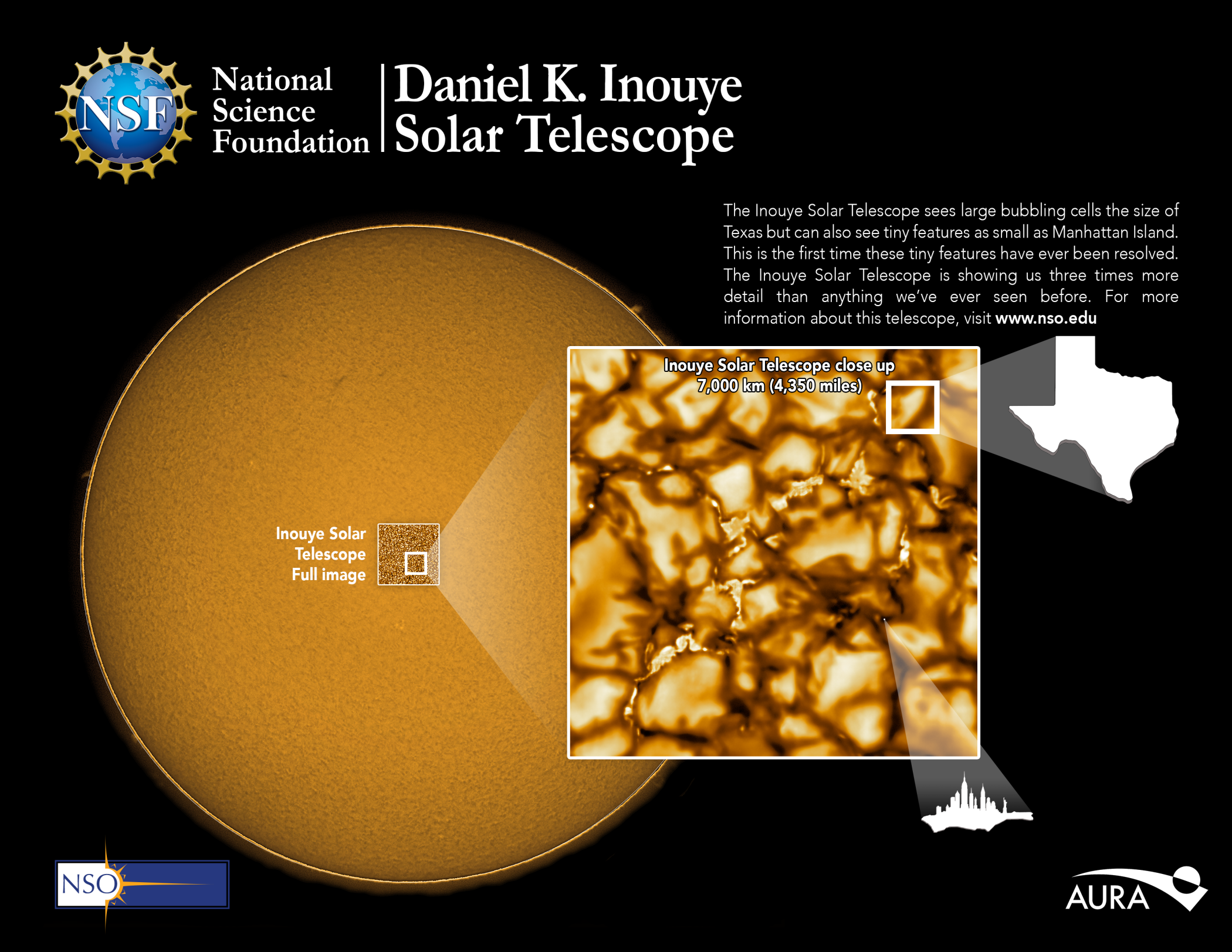The Daniel K. Inouye solar telescope of the American National Foundation for Science (NSF) managed to capture the first high-definition photographs of the Sun's surface. The images show in detail the turbulent patterns of plasma, an ionized gas formed at high temperatures, which covers the Astro-Rei.
Evidently in the images captured by the solar telescope are structures with a shape that resembles cells. According to NSF researchers, the formations represent the violent movements that carry the heat from inside the Sun to its surface, each of which has a comparable size to the state of Texas.

According to France Crdova, director of NSF, the discovery will allow scientists to better observe the star at the center of our planetary system, helping them to predict solar storms more accurately. The official recalls that solar activity is capable of affecting what is happening on our planet, having an impact, for example, on satellite communications, navigation systems and air travel.
The telescope will work in conjunction with NASA's Parker probe, which has been in orbit since 2018, and ESA's Solar Orbiter satellite to be launched into space in early February. The Parker probe still has a lot of work to do until 2025, but it has already gathered a considerable amount of data about dust rings, magnetic fields and solar winds. Some of the information collected was the basis of four scientific studies published in the journal Nature.
But the NASA probe is not the only one to explore the mysteries of Astro-Rei. ESA's PROBA2 satellite has been in orbit synchronized with the Sun around Earth for 10 years, on the twilight-dawn line. Despite its light dimension of only 13 kilograms, PROBA2 has a great responsibility: to observe solar events that may influence or affect what is happening on our planet.
Throughout 2019, the PROBA2 SWAP camera captured several photos during its mission of monitoring the Sun. ESA selected an image for each of the 365 days to create an assembly that represents a full year of star activity in the center of our system planetary.
